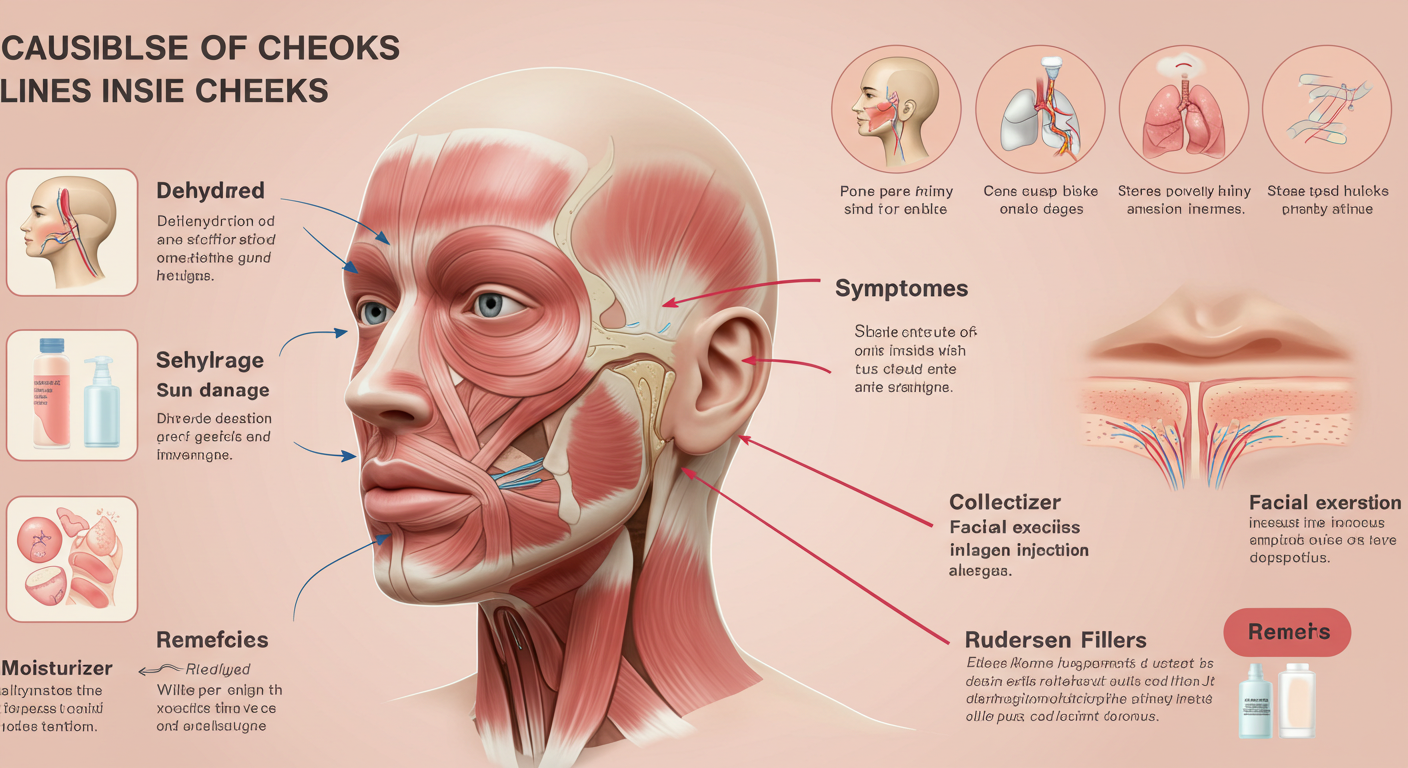Have you ever run your tongue along the inside of your mouth and felt strange grooves or ridges? If you’ve spotted lines inside cheek in the mirror, you’re not alone. While they’re often harmless and go unnoticed by most people, sometimes these inner cheek lines can point to underlying habits or even medical conditions. From constant cheek biting to minor irritation or chronic inflammation, there are several possible explanations for these lines. Understanding the cause is the first step toward maintaining healthy oral tissue.
What Are the Lines Inside the Cheek?
The inner cheek, lined by soft tissue called oral mucosa, is sensitive to friction, pressure, and irritation. These lines inside cheek often appear as thin, white, or pale horizontal ridges and may vary in texture. They can be symmetrical or only appear on one side, depending on what’s causing them. Sometimes, they’re just a physical response to pressure from teeth, but they can also be early indicators of issues that require attention.
Common Causes of Lines Inside Cheek
Let’s explore the most frequent reasons people develop lines inside cheek and what each could mean for your oral health.
1. Cheek Biting (Morsicatio Buccarum)
Involuntary or habitual cheek biting is a leading cause of inner cheek lines. When you bite your cheek regularly—due to anxiety, stress, or simply as a habit—it creates repeated trauma to the tissue. Over time, this can cause white ridges, thickened skin, or bumpy textures along the inner lining.
2. Linea Alba
One of the most common and benign conditions, linea alba is a horizontal white line inside the cheek that typically forms where the upper and lower teeth meet. It’s a result of light friction or mild pressure, often noticed in people who clench their jaw or grind their teeth. Linea alba doesn’t cause pain and doesn’t need treatment.
3. Teeth Grinding (Bruxism)
If you clench or grind your teeth at night, it may lead to lines inside cheek due to ongoing pressure and friction. Over time, the tissue adapts to this pressure by forming ridges or indentations. A night guard can help prevent further damage.
4. Dental Appliances or Misalignment
Braces, dentures, retainers, or even poorly aligned teeth can irritate the inside of the cheek. Continuous rubbing may lead to inflammation and the development of grooves or calloused skin in those areas.
5. Oral Friction or Trauma
Eating hard or sharp foods, accidentally chewing on your cheek, or experiencing trauma from dental tools can result in visible lines. These typically fade on their own unless the irritation becomes chronic.
Medical Conditions That Can Cause Lines Inside Cheek
While most lines inside cheek are caused by mechanical irritation, some medical conditions may also be to blame.
1. Oral Lichen Planus
This is a chronic inflammatory condition that causes lacy white patches or streaks inside the mouth, particularly on the cheeks. It’s not contagious, but it can be painful or irritating. Though its exact cause is unclear, it may be autoimmune in nature.
2. Leukoplakia
This condition appears as thick, white patches that cannot be scraped off. While most cases are benign, leukoplakia can sometimes become precancerous. Lines caused by leukoplakia usually appear flat and can be linked to smoking or long-term irritation.
3. Vitamin or Nutritional Deficiencies
Lack of certain nutrients, especially B-complex vitamins, iron, or folate, can result in changes to oral tissue. In some cases, this includes ridges or discoloration in the cheeks, tongue, and gums.
When to Be Concerned About Lines Inside Cheek
Although many causes are harmless, you should monitor changes in the appearance, texture, or sensation in your cheeks. Consult a healthcare provider or dentist if:
-
The lines are persistent or getting worse
-
There’s associated pain, burning, or sensitivity
-
You notice bleeding or ulcers
-
The patches are thick, white, or do not fade
-
There is a lump or growth near the area
Early diagnosis is important for ruling out any potentially serious oral health conditions.
Diagnosis and What to Expect at the Dentist
When you report lines inside cheek to a dental professional, they may begin with a visual inspection. Depending on your symptoms, they could recommend:
-
Dental X-rays to assess alignment or irritation sources
-
Biopsy of any unusual tissue
-
Discussion of habits like smoking, grinding, or cheek biting
-
Referral to a specialist, such as an oral surgeon or dermatologist
Treatment Options for Lines Inside Cheek
Treatment depends on the root cause of the lines. Below are common approaches based on different triggers:
For Cheek Biting or Teeth Grinding:
-
Wear a night guard
-
Practice stress reduction techniques
-
Seek behavioral therapy if biting is anxiety-driven
For Appliance-Related Irritation:
-
Adjust dentures or braces
-
Use wax to protect cheek tissue
For Medical Conditions:
-
Topical corticosteroids for lichen planus
-
Vitamin supplements for deficiencies
-
Monitoring leukoplakia and performing a biopsy if needed
Prevention: How to Keep Your Inner Cheeks Healthy
Even if your current symptoms are mild, prevention is key. Here’s how you can avoid developing or worsening lines inside cheek:
-
Avoid frequent cheek biting or chewing gum excessively
-
Stay hydrated to keep the oral mucosa healthy
-
Use a properly fitted mouthguard if you grind your teeth
-
Limit spicy or acidic foods that irritate soft tissue
-
Get regular dental check-ups
Final Thoughts: Don’t Ignore Changes Inside Your Cheeks
While lines inside cheek are usually nothing to worry about, they can serve as helpful indicators of what’s happening in your body or mouth. Whether it’s due to grinding, biting, or something medical, paying attention to your inner cheek lining can help prevent future complications. If something feels off, trust your instincts and schedule a dental or medical consultation.
Your oral health is a window into your overall well-being—keep it in focus.
Seeing lines inside cheek and not sure why? This detailed guide explores causes, symptoms, treatment options, and when to seek medical advice for inner cheek markings.
